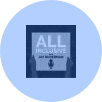White Papers & Research
White Papers & Research
Self-Driving Cars: The Impact on People with Disabilities
Our New Study Reveals Self-Driving Cars Could Open 2 Million Employment Opportunities for People with Disabilities
Introduction
Self-driving cars have almost become a staple of everyday conversation. You hear about them on the radio, read about them in the newspapers, and you see them on TV, and not just in sci-fi movies. So as this technology becomes more common-place, it’s important to recognize that what we may term a self-driving car these days is strictly speaking, not one. While more and more cars have self-driving features installed—like highly advanced auto-pilot modes—the day when our car comes to get us from the airport all by itself is still far off in the future. Even though we have some highly sophisticated technology on the road, even the most sophisticated self-driving car will just sit behind a moving truck that is parked in the road until the human driver tells it to drive around it. But despite the fact that the technology levels are not yet ripe for fully autonomous vehicles, the advances we’re seeing are ripe for a much-needed conversation about the future implementation of this technology once it is fully developed. Our civilization relies on transportation and we would be remiss to think that self-driving cars won’t change life as we know it. So as we begin to discuss its implications, it’s imperative that we start with those segments of the populations that would be most impacted by the implementation of this technology: people with disabilities. The Ruderman Family Foundation and Securing America’s Future Energy (SAFE) have paired up to produce the Ruderman White Paper on Self-Driving Car Technologies: The Impact on People with Disabilities. We’re excited to share our results with you and continue this necessary conversation that will ensure that 20% of our population are not left out of reaping the benefits of this transformative technology.
Summary
In the United States, approximately one in every five persons, or more than 57 million people, have a disability. The most recent government transport survey indicated that six million individuals with a disability have difficulty getting the transportation they need.
-
- Transportation is a key community-based support that allows individuals to fulfill their civic responsibilities and makes it possible to enjoy one’s civil rights. When a disability limits transportation options, one’s disability can result in reduced economic opportunities, isolation that exacerbates medical conditions or leads to depression, and a diminished quality of life
-
- Mitigating transportation related obstacles for individuals with disabilities would enable new employment opportunities for approximately 2 million individuals with disabilities, and save $19 billion annually in healthcare expenditures from missed medical appointments. This is in the context of the anticipated broader impacts of autonomous vehicles: $1.3 trillion in savings from productivity gains, fuel costs, accident prevention, among other sources
-
- As new transportation technologies such as on-demand mobility solutions and, in the near future, autonomous vehicles enter the mainstream they offer potential for reducing transportation obstacles for Americans with disabilities
-
- Across the country, autonomous vehicle legislation is being discussed with little attention given to the use of this technology to serve individuals with disabilities. There is a need for the disability community to organize, learn more about the technology, and enhance its advocacy efforts. And additionally for the technology developers to become better educated on the need and value of designing their vehicles with the disability community in mind.
Read the Ruderman White Paper
To download a PDF version of the paper, please click here
To download a text only version of the paper, please click here
Published in January 2017
Latest Post
Stay Included
To stay up to date on our most recent advocacy efforts, events and exciting developments, subscribe to our newsletter and blog!















